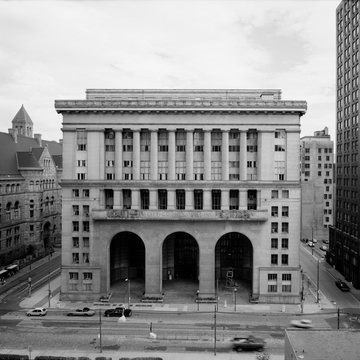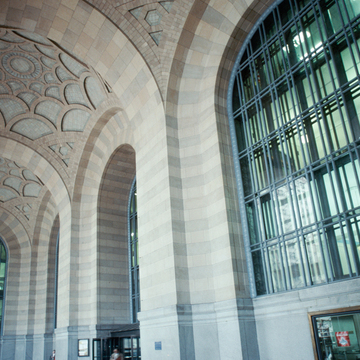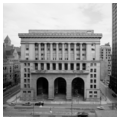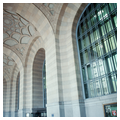The building serves as Pittsburgh's city hall and accommodates additional courtrooms for the county. The detailing appears to be by Edward Lee, who won the competition for the City-County Building in 1914, and here used a modern interpretation of classicism, while the parti almost certainly came from Henry Hornbostel. He turned away from the most obvious elements of Richardson's
You are here
City-County Building
1915–1917, Edward B. Lee and Palmer, Hornbostel and Jones. 414 Grant St.
If SAH Archipedia has been useful to you, please consider supporting it.
SAH Archipedia tells the story of the United States through its buildings, landscapes, and cities. This freely available resource empowers the public with authoritative knowledge that deepens their understanding and appreciation of the built environment. But the Society of Architectural Historians, which created SAH Archipedia with University of Virginia Press, needs your support to maintain the high-caliber research, writing, photography, cartography, editing, design, and programming that make SAH Archipedia a trusted online resource available to all who value the history of place, heritage tourism, and learning.














